
The very best foot pads are the ones that nature gave us (i.e., the ones already built into our feet), such as the forefoot fat pad and the calcaneal fat pad. But for most of us who have spent a lifetime shod, our foot pads are not properly positioned (or conditioned) to play the role they were intended to play. In order to get the “built-in” foot pads doing what they're supposed to do, which is to gently cushion and protect bones, nerves, and other foot and toe tissues, it's important to consider the great variety of “aftermarket” foot pads available to consumers.
The best foot pads can help reduce your foot pain, improve your foot function, and rehabilitate your foot. Not all foot pads are created equal, however; pads that immobilize your feet, holding them rigidly in place, can have detrimental effects on your feet and can unfavorably alter the structural alignment and tone of your foot tissues, including your toes. Consider choosing foot pads that are flexible and durable and that support your foot in a natural way.
In our experience, we have found the following to be some of the best foot pads for natural foot health:
- Toe Spacing Pads
- Metatarsal Pads
- Heel Pads
- Tongue Pads
- Moleskin Pads
Read on to learn more about each of these helpful foot pads.
1. Toe Spacing Pads

Your feet should be at their widest at the ends of your toes, not at the ball of your foot. In people who have gone barefoot or who have worn minimalist footwear most of their lives—which is common in many parts of the world, including Africa, Asia, and South and Central America—feet are widest at the ends of the toes, and the toes are evenly spaced and splayed widely. This is a foot structure similar to that of newborns, who haven't yet had their feet molded and sculpted by shoes that incorporate tapering toe boxes and other problematic design features.
You can use toe spacing pads, such as Correct Toes, to combat the deforming effects of conventional footwear and to help realign your toes to the position that nature intended. Restoring your big toe so that it's in line with its corresponding metatarsal bone is particularly helpful in preventing a variety of conditions, such as bunions, hammertoes, neuromas, plantar fasciosis, and shin splints. Correct Toes toe spacing pads—which can be worn under a conventional sock, over a pair of toe socks, or within men's or women's shoes that feature a sufficiently wide toe box—are constructed of medical grade silicone and come in a variety of sizes to suit your unique feet. These toe spacers are also highly customizable.
SHOP TOE SPACERS
2. Metatarsal Pads

Wearing conventional shoes (i.e., shoes with elevated heels, tapering toe boxes, and built-in toe spring) contributes to foot problems such as hammertoes, other crooked toes, and a forward displacement of the fat pad that usually resides under your forefoot. Note: The forefoot fat pad is intended to support your metatarsal bones at the point where they contact the ground.
Metatarsal pads are used to help spread your transverse foot arch (i.e., the arch behind the ball of your foot that runs across the width of your foot), promote the return of any overextended toes to their normal anatomical position, and encourage the return of your forefoot fat pad to a place that supports your metatarsal heads. In other words, metatarsal pads help properly position your metatarsal heads and the fat pad that’s underneath them. This, in turn, can help straighten and realign your toes—especially when metatarsal pads are used in conjunction with a toe spacing device such as Correct Toes—and provide your metatarsal heads with the natural cushioning they require.
There are two main types of metatarsal pads: Stationary and mobile. Stationary metatarsal pads have an adhesive backing and are permanently fixed inside your shoes, whereas mobile metatarsal pads are worn on your feet and can be used in all of your footwear. Both types of metatarsal pads function in the same way, and so which one you use is simply a matter of personal preference.
SHOP PEDAG METATARSAL PADS
SHOP STRUTZ PRO FOOT PADS
3. Heel Pads
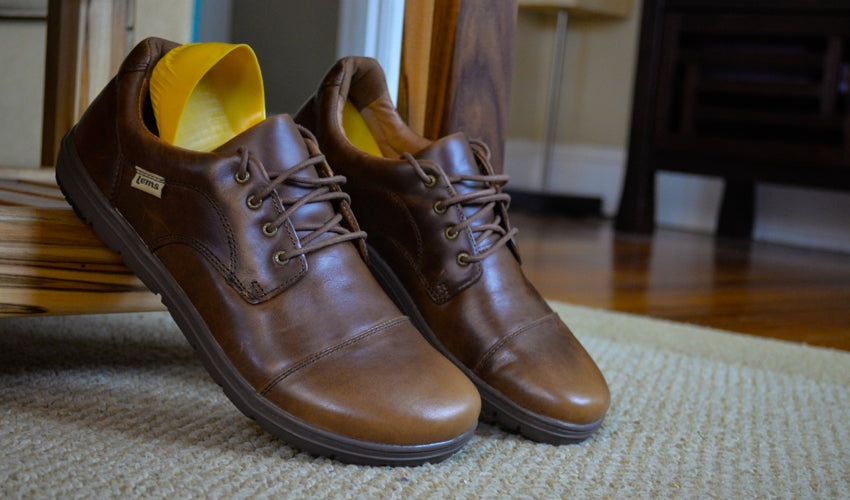
Heel pads, also known as heel cups, can be used in all types of footwear to help cradle and protect your heel from pain and the shock forces that sometimes occur with weight-bearing activity (e.g., running, walking, and standing). The patented, multi-layer waffle design of these supportive, yet flexible heel pads allows your heel to rotate with the regular motion of your foot during gait, cushioning sensitive structures on the bottom of your heel without impeding natural foot function.
Heel pads help reduce Achilles tendon pressure, promote greater flexibility in your Achilles tendon, and can be helpful in treating or preventing heel bursitis and shin splints. These lightweight and unobtrusive heel pads can also be helpful for individuals transitioning from conventional footwear to minimalist (or “minimalist-like”) shoes who develop point pain in the heel, or for an elderly individual who has lost some of his or her calcaneal fat pad (the cushion that protects your calcaneus, or heel bone).
SHOP HEEL CUPS
4. Tongue Pads

Tongue pads help prevent any pain or discomfort caused by your shoelaces or your shoe's tongue itself. These pads also help your shoes fit better by reducing any forward sliding of your foot within your shoe. Most people have one foot that is longer than the other, and so tongue pads can be particularly helpful in the shorter foot shoe to help take up any slack between the front of your ankle and your shoe's tongue. Tongue pads, like metatarsal pads, have an adhesive backing, and they can be placed on the underside of your shoe's tongue to help you achieve an optimal fit.
SHOP TONGUE PADS
5. Moleskin Pads

Corns, calluses, and blisters are three common skin problems that can affect your feet. A simple way to eliminate or reduce pressure on your corns, calluses, or blisters is to place a little gauze or absorbent cotton over your affected area, then cover it with a thin moleskin pad. It's best to remove this covering every night, as well as when you bathe or shower, so that your skin can breathe and excessive moisture does not accumulate under your pad.
When you remove your moleskin pad, hold your surrounding skin taut as you slowly pull the pad away from your corn, callus, or blister. If your moleskin pad is situated on your sole, pull the moleskin back toward your heel, otherwise, you risk tearing your skin when you pull in the opposite direction. Moleskin pads are economical, easy to apply, can be cut to your exact needs and specifications, and do an excellent job in relieving painful corns, calluses, blisters, and shoe friction.

WANT TO IMPROVE YOUR FOOT HEALTH?
Let the team at Natural Footgear help you! Subscribe to our newsletter for the latest offers and helpful info, and sign up for our FREE email courses on various topics and foot health conditions.
Sign Up →
Want to Improve Your Foot Health?
We are here to help you every step of the way. Get our newsletter for the latest offers and helpful info, and sign up for our FREE email courses on various topics and conditions, including bunions, hammertoes, neuromas, plantar fasciosis, shin splints, ingrown toenails, and more.
Sign Up →
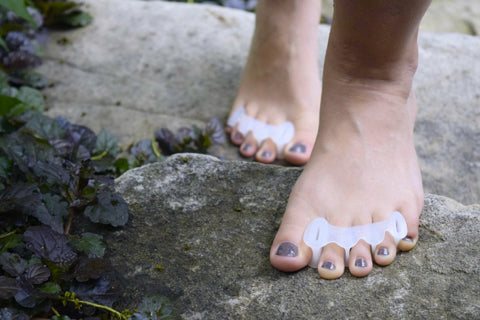 Correct Toes is a toe spacing device that is beloved by many for its ability to address a wide range of foot and toe problems and restore natural toe alignment. The very first of its kind, Correct Toes was introduced to patients and consumers by its creator, Dr. Ray McClanahan, back in 2001 (you can learn more about the Correct Toes origin story here). Since then, a number of other...
Read more
Correct Toes is a toe spacing device that is beloved by many for its ability to address a wide range of foot and toe problems and restore natural toe alignment. The very first of its kind, Correct Toes was introduced to patients and consumers by its creator, Dr. Ray McClanahan, back in 2001 (you can learn more about the Correct Toes origin story here). Since then, a number of other...
Read more











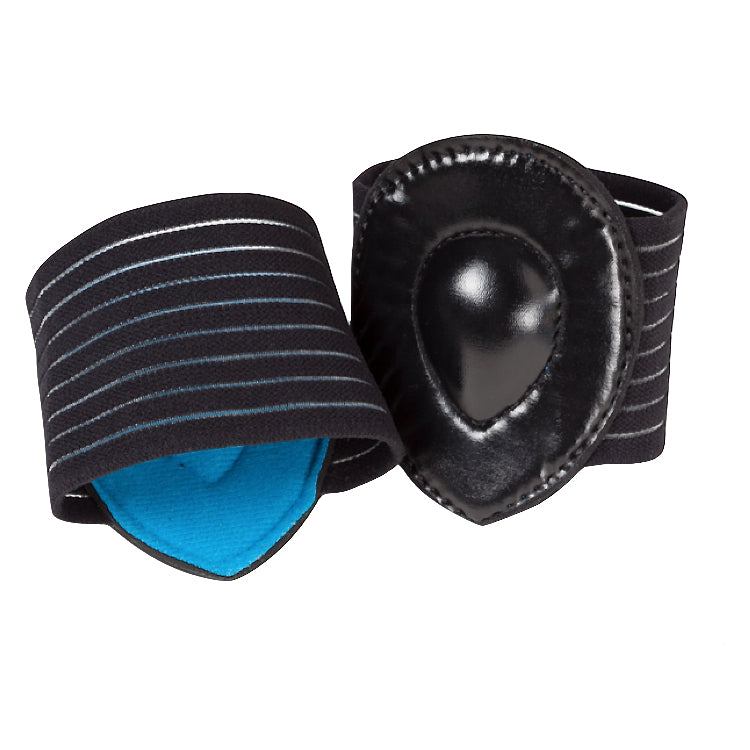
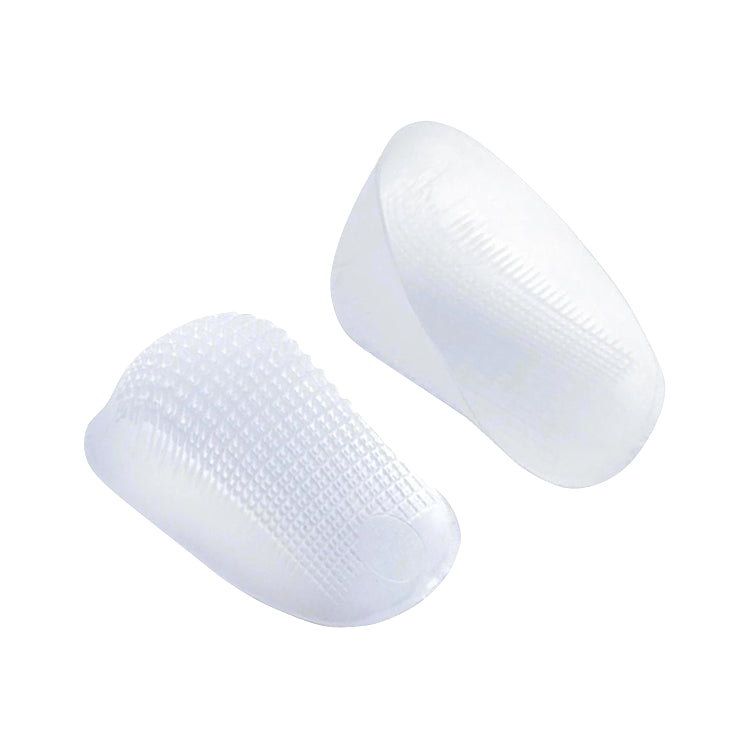
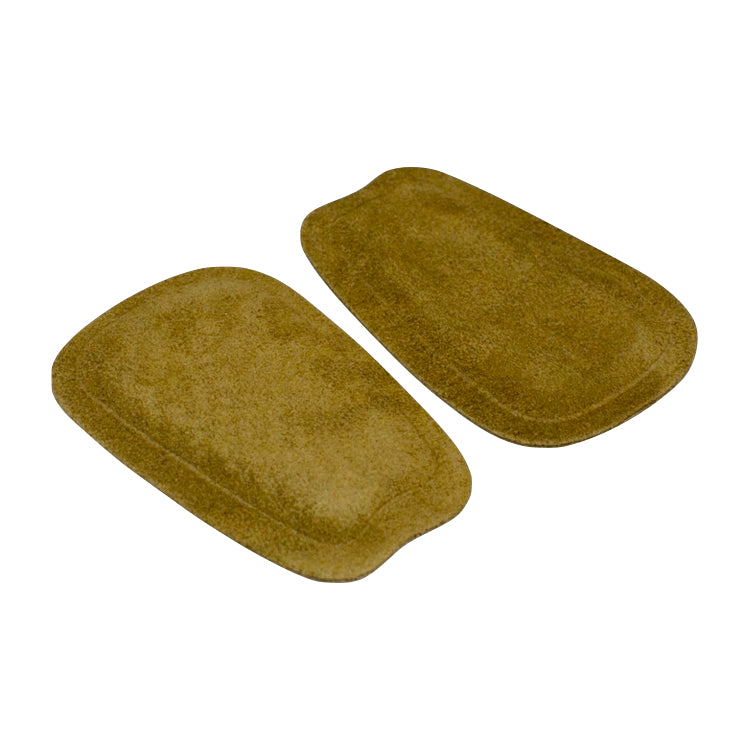
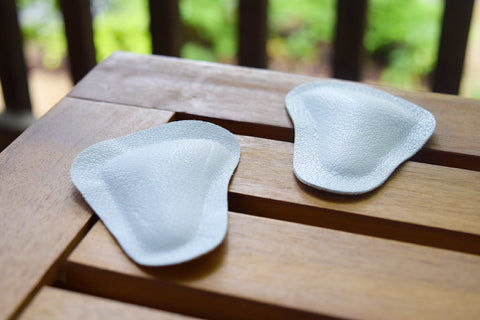


I use toe correctors and have used the metatarsal pads. I’m approaching 75 and work in a food co-op with concrete floors. My forefoot fat pads (the ones under the balls of my feet) are thinning. I found the highest stack height shoe available in zero-drop that I know of (Lems Primal Zen) and put NorthSole insoles in them. That helped, but my feet are still sore. If anyone knows of a higher stack height zero-drop shoe than the Lems Primal Zen, please let me know. Thanks.
Hi, John,
It sounds like you’re doing a great job of addressing your foot health! The thinning of forefoot fat pads can be a challenging issue, especially with long hours on hard surfaces. While the Lems Primal Zen is a great choice, there are a few other zero-drop shoes with higher stack heights, such as a number of models from Altra or Topo Athletic. For additional relief, you might want to consider softening up your work environment (if possible) with cushioned mats to further reduce impact.
All the best,
Marty Hughes, DC
I love all the info on your site and have begun using the footgear you recommend to help reduce my foot pain and improve my foot function. Beyond the footgear you feature on your site, what lifestyle changes or habits are most helpful for preventing or alleviating foot pain?
Hi, Steve. Thank you for your thoughtful question! We’re so glad to hear that you’re finding the information on our site helpful and that you’ve started incorporating natural footgear into your routine. That’s a huge step toward better foot health! While footgear plays a crucial role in restoring natural foot function, lifestyle choices and daily habits can have a significant impact on preventing and alleviating foot pain. By addressing movement patterns, circulation, and overall foot strength, you can create an environment where your feet thrive.
One of the most effective habits you can develop is simply spending more time barefoot or in healthy-foot-shaped, zero-drop footwear. This encourages natural toe splay, strengthens intrinsic foot muscles, and allows your feet to function as they were designed. Walking barefoot on varied terrain—such as grass, sand, or even gravel—provides natural stimulation and helps train foot stability and proprioception. If you’re used to conventional footwear, transitioning gradually can make a big difference in comfort and long-term adaptation.
Regular foot massage and self-myofascial release can also be incredibly beneficial. Massaging your feet—either with your hands, the Naboso Neuro Ball, or another specialized foot roller—helps release tension, improve circulation, and break up adhesions in the fascia. Many people don’t realize how much tension builds up in the feet over time, especially from tight shoes or prolonged standing. Seeking out professional massage therapy, particularly from someone experienced in foot and lower leg work, can further enhance mobility and function.
Another powerful habit is incorporating daily foot-strengthening exercises. Simple movements like toe spreads, short foot exercises, and towel scrunches can activate and reinforce the small but mighty muscles in your feet. Pairing these exercises with calf stretching and hip mobility work ensures that your entire lower body is working in harmony, reducing strain on your feet. Remember, foot pain is often not just a foot issue—it can be influenced by tightness or weakness elsewhere in your body.
Finally, paying attention to movement throughout your day is key. Avoid prolonged periods of sitting or standing in one position, take frequent movement breaks, and prioritize walking whenever possible. Consider adopting a more active lifestyle that incorporates natural movement—whether it’s hiking, yoga, or simply taking the stairs instead of the elevator. By combining mindful footwear choices with intentional movement, massage, and strengthening exercises, you can create a holistic foundation for long-term foot health and comfort. Keep up the great work, and we’re excited to hear about your progress!
Yours in Foot Health,
Drs. Marty & Robyn Hughes